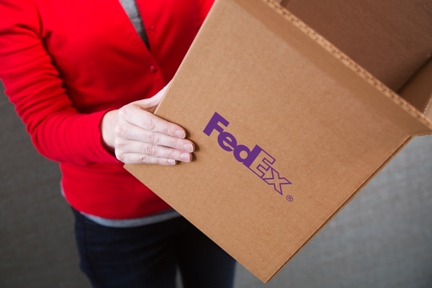 We recently posted about the new package laboratory that FedEx opened to test and design packages for a wide variety of products that their customers ship. This new facility will prove to be very beneficial for customers with specific packaging needs. However, even the simplest packages need to pass one basic test – getting your shipment to its destination safely and securely. Here are some tips for packing your FedEx small package shipment like a pro:
We recently posted about the new package laboratory that FedEx opened to test and design packages for a wide variety of products that their customers ship. This new facility will prove to be very beneficial for customers with specific packaging needs. However, even the simplest packages need to pass one basic test – getting your shipment to its destination safely and securely. Here are some tips for packing your FedEx small package shipment like a pro:
Boxing
When you select a box for your shipment, make sure to match it appropriately to the size and weight of the items you are shipping. Avoid using a box that would leave an abundant amount of empty space as this could cause a cost increase if your shipment is subject to DIM weight pricing. It will also make it more difficult to ensure your product is secure in the box, helping to prevent any damages. For heavier items, use double-walled or thick corrugated boxes. If you are reusing a box, be sure to remove all old labels, and make sure it's high-quality, with no holes, tears, or dents.
Cushioning
Choose cushioning with enough density to keep items from shifting. It’s also good practice to wrap and tape all sharp or protruding edges on the items you’re shipping. You will also want to bind printed material together or secure any loose items together. These precautions help to prevent any damages to your product or to the packaging itself.
Labeling
Place your label on the package's largest surface and secure it firmly with your hand. When using a pouch, remove the peel-off strip and firmly seal the flap. For luggage, travel cases, or other containers with handles, label your item with a tie-on tag (available at FedEx Office locations). For wood, plastic, or metal containers be sure to use labels with extra adhesive. While not required, it is also a good idea to put a copy of your label inside your package. This way FedEx can still make the delivery in the event your outer label comes off.
Sealing
With your box properly packed, apply at least three strips of packing tape (no duct or masking tape) that is at least 2" wide evenly across all flaps and seams, top and bottom, using the H taping method. You will also want to avoid taping over your FedEx label.
Through an association shipping program managed by PartnerShip, you can receive exclusive discounts on select FedEx services. If you belong to an association we work with, take advantage of our free shipping benefits today. If you’re not sure if you qualify for one of our FedEx small package shipping programs, contact us and we’ll find the solution that’s right for you.